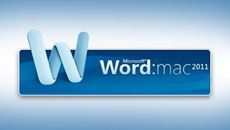- Delivery Method Online
- Professional Certificate
- 24hrs Suggested Study Time
- 3 Months Access
- Tutor Support
- Study On Any Device
- 1595 Students
Mobile App Development

Learn to create Mac, iPhone, and iPad apps and programs using Objective-C and the Xcode compiler.
The fastest-growing software market today involves mobile applications (or apps). In this course, you'll learn to use the free Xcode compiler and the Objective-C programming language to program your own apps that you can sell through Apple's App Store, reaching millions of potential customers around the world.
You'll start with the basic steps to writing any program, then progress to using Xcode—the same compiler that Apple, Microsoft, Adobe, and many other companies use to write programs and applications. Along the way, you'll explore examples and perform simple coding exercises to build your confidence using Xcode and Objective-C.
Even if you're new to programming or have experience programming a different type of computer, this course will offer the guidance you need to build your own apps. By the end of this course, you'll know how to find your way around Xcode and write Objective-C commands, so you'll be ready to start creating your very own Mac,iPhone, or iPad programs!
Course Revised March 2014
Courses are delivered to you through expertly executed lessons, online instruction and interaction with like-minded students. Our courses are designed to deliver all of the benefits of studying in a classroom whilst giving you the flexibility to study at a time and place to suit your needs. You can access your classroom 24/7 from any device with an internet connection.
This course has a 3 month duration. You'll complete comprehensive lessons, quizzes and assignments before submitting your final exam at the end of the course to achieve your certificate. Courses must be completed within the 3 month access period.

Wallace Wang
Wallace Wang is the author of over 40 computer books including "Microsoft Office 2007 For Dummies." In addition to writing computer books, he has also co-authored "Breaking Into Acting for Dummies" and ghost written several books about investing i... Read more
Read Wallace Wang's ProfileFrequently Asked Questions
What people are saying about our courses
The Learning Environment
From the moment that you enrol in the Mobile App Development you will become an integral part of our learning community. You'll find yourself with the freedom to learn at a speed that suits you, on any device, from anywhere in the world. Achieving your career goals no longer has to mean compromising family and work commitments.
Our Values
Learn At Your Own Pace
We believe in personalised learning. That's why we provide all the tools and support you need to succeed at your own pace. With flexible learning, you'll stay motivated and retain more information. Plus, you can balance your studies with work and family commitments to make your dreams a reality.
We Won't Break The Bank
Education should be accessible to anyone who wants to learn. That's why we offer some of the most competitive prices in the industry with payments plans for just $25 per week. Investing in your future is a smart choice and doesn’t have to break the bank.
Industry-Led Courses
There's no better way to learn than from experts with years of experience in your field. That's why each of our 200+ industry-led courses are designed to give you a real-life perspective on your industry. With our expert mentors, you'll learn from people who have a wealth of knowledge and experience, and who are passionate about sharing it with you.
Get The Personal Support You Deserve
At Vibe Learning, we're real people who are dedicated to providing you with personal support every step of the way. Our industry experts are not only professional and knowledgeable but also incredibly passionate about sharing their expertise with you. With their guidance, you'll gain invaluable insights and practical knowledge to help you succeed.
Still looking?
Check out the following courses related to Mobile App Development:



